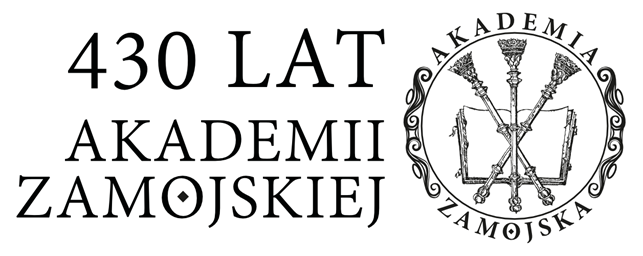Bassett, K., R. Griffiths, and I. Smith. 2002. “Cultural Industries, Cultural Clusters and the City. The Example of Natural History Film-Making in Bristol.” Geoforum no. 33 (2): 165–177. doi: 10.1016/S0016-7185 (01)00032-X.
DOI: https://doi.org/10.1016/S0016-7185(01)00032-X
Bathelt, H., and M. Taylor. 2002. “Clusters, Power and Place: Inequality and Local Growth in Time–Space.” Geografiska Annaler: Series B, Human Geography no. 84 (2): 93–109. doi: 10.1111/j.0435–3684.2002.00116.x.
DOI: https://doi.org/10.1111/j.0435-3684.2002.00116.x
Bellandi, M. 2002. “Italian Industrial Districts. An Industrial Economics Interpretation.” European Planning Studies no. 10 (4): 425–437. doi: 10.1080/09654310220130158.
DOI: https://doi.org/10.1080/09654310220130158
Bojar, E., and J. Bis. 2006. “Rola bezpośrednich inwestycji zagranicznych (BIZ) w klastrach.” Przegląd Organizacji no. 10: 32–36.
DOI: https://doi.org/10.33141/po.2006.10.07
Camagni, R. 2002. “On the Concept of Territorial Competitiveness: Sound or Misleading?” Urban Studies no. 39 (13): 2395–2411. doi: 10.1080/0042098022000027022.
DOI: https://doi.org/10.1080/0042098022000027022
Chapain, C., P. Cooke, L. De Propris, S. MacNeill, and J. Mateos-Garcia. 2010. Creative Clusters and Innovation: Putting Creativity on the Map. London: NESTA.
Clustering and City Competitiveness — an Introduction. EUROCITIES Clusters Working Group. 2009.
The Creative Industries Mapping Document 2001. 2001. http://www.culture.gov.uk/global/publications/archive_2001/ci_mapping_doc_2001.htm [At the moment document avaialble at The National Archives http://webarchive.nationalarchives.gov.uk/20060715201350/http://www.culture.gov.uk/global/publications/archive_2001/ci_mapping_doc_2001.htm — Ed.].
Dei Ottati, G. 2002. “Social Concentration and Local Development. The Case of Industrial Districts.” European Planning Studies no. 10 (4): 449–466.
DOI: https://doi.org/10.1080/09654310220130176
Gordon, I.R., and P. McCann. 2000. “Industrial Clusters: Complexes, Agglomeration and/or Social Networks? ” Urban Studies no. 37 (3): 513–532.
DOI: https://doi.org/10.1080/0042098002096
Harvey, D.C., H. Hawkins, and N.J. Thomas. 2012. “Thinking Creative Clusters Beyond the City. People, Places and Networks.” Geoforum no. 43 (3): 529–539. doi: 10.1016/j.geoforum.2011.11.010.
DOI: https://doi.org/10.1016/j.geoforum.2011.11.010
Heebels, B., and I. van Aalst. 2010. “Creative Clusters in Berlin. Entrepreneurship and the Quality of Place in Prenzlauer Berg and Kreuzberg.” Geografiska Annaler: Series B, Human Geography no. 92B (4): 347–363. doi: 10.1111/j.1468-0467.2010.00357.x.
DOI: https://doi.org/10.1111/j.1468-0467.2010.00357.x
Hołub-Iwan, J. 2012. Benchmarking klastrów w Polsce — edycja 2012. Raport z badania (Raport ogólny ), Seria Innowacje. Warszawa: Polska Agencja Rozwoju Przedsiębiorczości.
Hołub-Iwan, J., and M. Małachowska. 2008. Rozwój klastrów w Polsce. Raport z badań. Szczecin: Szczecińska Fundacja Talent-Promocja-Postęp.
Jankowska, B. 2012. Koopetycja w klastrach kreatywnych. Przyczynek do teorii regulacji w gospodarce rynkowej. Poznań: Wydawnictwo Uniwersytetu Ekonomicznego.
Klemens, B. 2012. “Polityka wspierania struktur klastrowych na poziomie Unii Europejskiej i Polski.” Barometr Regionalny. Analizy i prognozy no. 2 (28): 25–32.
Kratke, S. 2004. “City of Talents? Berlin’s Regional Economy, Socio-Spatial Fabric and ‘worst practice’ Urban Governance.” International Journal of Urban and Regional Research no. 28 (3): 511–529. doi: 10.1111/j.0309–1317.2004.00533.x.
DOI: https://doi.org/10.1111/j.0309-1317.2004.00533.x
Lugo, J., T. Sampson, and M. Lossada. 2002. Latin America’s New Cultural Industries still Play Old Games. From the Banana Republic to Donkey Kong. Game Studies 2 (2), http://www.gamestudies.org/0202/lugo/.
Martin, R., and P. Sunley. 2003. “Deconstructing Clusters: Chaotic Concept or Policy Panacea? ” Journal of Economic Geography no. 3 (1): 5–35. doi: 10.1093/Jeg/3.1.5.
DOI: https://doi.org/10.1093/jeg/3.1.5
Norcliffe, G., and O. Rendace. 2003. “New Geographies of Comic Book Production in North America: The New Artisan, Distancing, and the Periodic Social Economy.” Economic Geography no. 79 (3): 241–263.
DOI: https://doi.org/10.1111/j.1944-8287.2003.tb00211.x
Porter, M.E. 1990. The Competitive Advantage of Nations. New York: Free Press.
DOI: https://doi.org/10.1007/978-1-349-11336-1
Power, D. 2011. Priority Sector Report: Creative and Cultural Industries, Europa INNOVA Paper. Luxembourg: Publications Office of the European Union.
Rogoda, B. 2010. “Kooperacyjne modele biznesu na przykładzie Klastra Przemysłów Kultury i Czasu Wolnego INRET.” In Rola sektora kultury i przemysłów kreatywnych w rozwoju miast i aglomeracji, edited by A. Klasik, 101–117. Katowice: Wydawnictwo Uniwersytetu Ekonomicznego.
Rosenfeld, S.A. 1997. “Bringing Business Clusters into the Mainstream of Economic Development.” European Planning Studies no. 5 (1): 3–23. doi: 10.1080/09654319708720381.
DOI: https://doi.org/10.1080/09654319708720381
Stryjakiewicz, T., and K. Stachowiak. 2010. Uwarunkowania, poziom i dynamika rozwoju sektora kreatywnego w poznańskim obszarsze metropolitalnym, Sektor kreatywny w poznańskim obszarze metropolitalnym. Poznań: Bogucki Wydawnictwo Naukowe.
Throsby, C.D. 2010. Ekonomia i kultura. Translated by O. Siara, Kultura się Liczy! Warszawa: Narodowe Centrum Kultury.
Van Dijk, M.P., and A. Sverisson. 2003. “Enterprise Clusters in Developing Countries: Mechanisms of Transition and Stagnation.” Entrepreneurship & Regional Development no. 15 (3): 183–206.
DOI: https://doi.org/10.1080/08985620210159239



 English
English
 Język Polski
Język Polski




